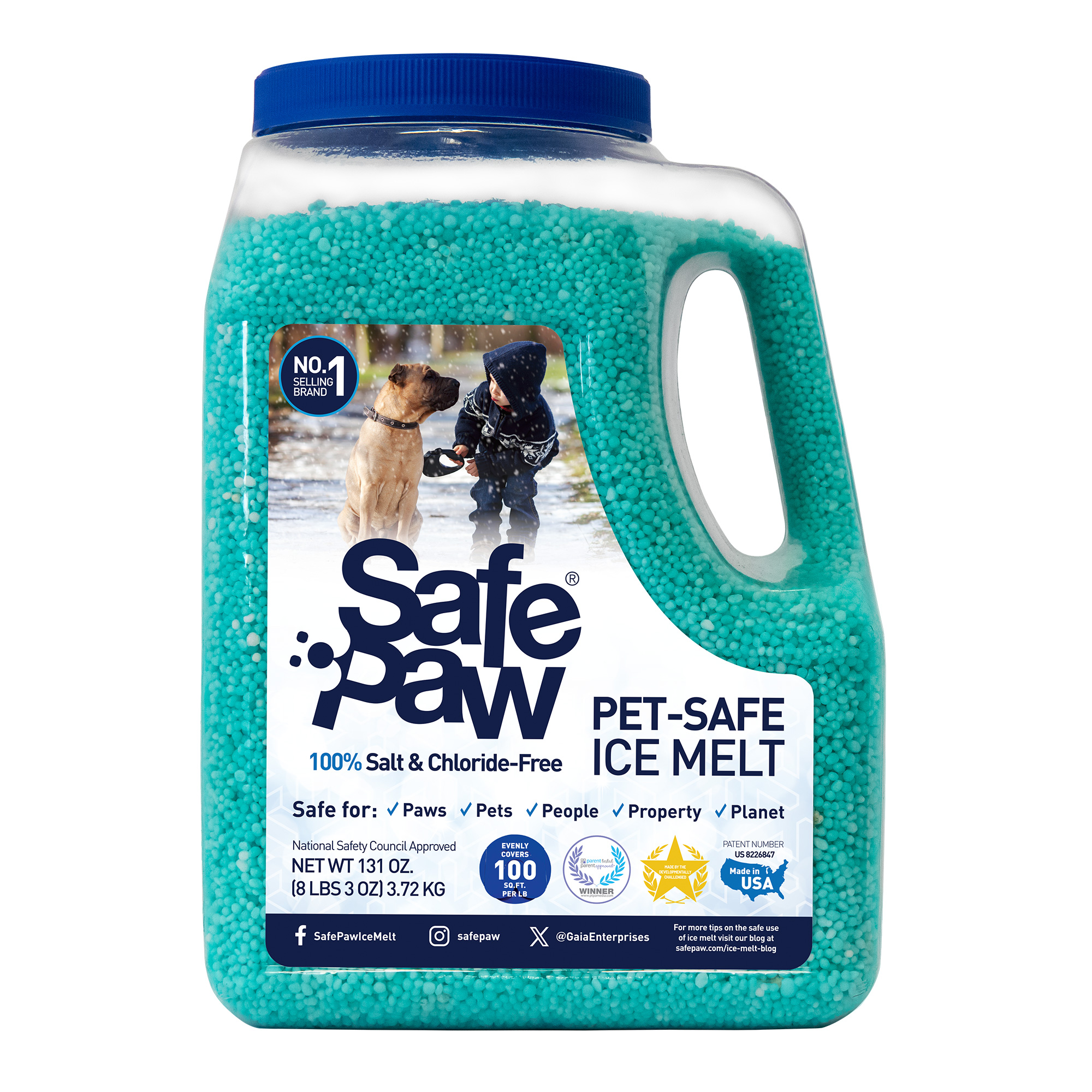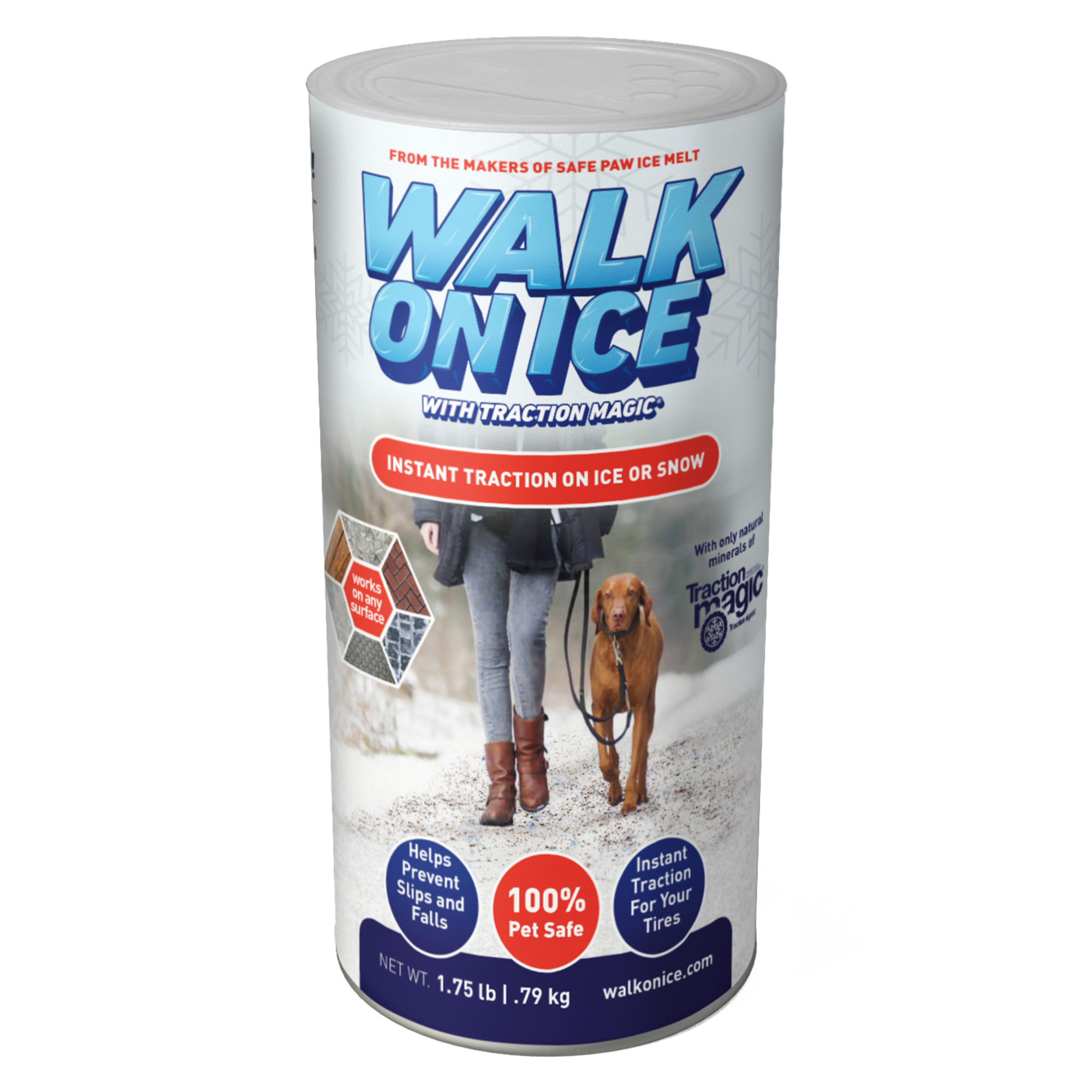Safe Paw Insights on Pet Paw Health, Heat, and Ice Safety
Hot Pavement & Paw Protection Many pet owners underestimate how dangerous summer surfaces can become. Asphalt can reach 135°F (57°C) when the air temperature is only 86°F (30°C) AAHA. A…
Hot pavement. Sharp gravel. Lawn chemicals. Allergens. Winter is only one chapter in the story of paw safety. At Safe Paw, we’re dedicated to a line of year-round paw care solutions—supporting paw health 365 days a year.
Because when we care for their paws, we care for their freedom, their comfort, and their ability to explore the world safely.
At Gaia Enterprises, we believe that the health of a pet begins at the paws. Paws are not just how dogs move through the world—they’re how they feel it. Paws are packed with nerve endings and blood vessels, making them highly sensitive to temperature, texture, and irritants. When paws are uncomfortable, your dog is uncomfortable.
Unlike us, pets can’t tell us what’s wrong. They show it in subtle ways: licking, limping, hesitation to walk, or even sudden changes in behavior. We often miss the signs, assuming a quirky habit. In reality, that obsessive paw licking is often a response to pain or damage, especially after exposure to harsh chemicals like salt-based ice melt.
Worse, this can turn into a harmful cycle where licking leads to ingestion of chemicals, causing internal discomfort or toxicity. That’s why, at Safe Paw, paw safety isn’t just a product feature—it’s our mission.
More than 30 years ago, our founder Steve Greenwald, a chemical engineer, was asked to create a better, safer ice melt. It was just another technical challenge—until it became deeply personal. During a family visit, Steve noticed his dog’s paws were raw, bruised, and inflamed. The cause? Exposure to traditional salt-based ice melt scattered on the sidewalks. That moment reframed everything.
Steve realized this wasn’t just about chemistry; it was about protecting the animals we love. He understood the long-term risks of chloride-based deicers: corroded surfaces, environmental pollution, and most heartbreakingly, injured pets. And so began the journey that would become Gaia Enterprises—with a mission to protect pets from the ground up.

Our flagship product. 100% salt-free, chloride-free, and non-toxic. Safe for pets, kids, and the environment. Works in sub-zero temps without harming surfaces.

An instant traction agent for icy surfaces. Non-clumping formula provides immediate grip on driveways and sidewalks, making it a perfect companion to Safe Paw.

A professional-grade blend for commercial and industrial jobs. It offers a powerful, yet non-toxic solution for large-scale application on roads and parking lots.
But we didn’t stop there. We’re now working on a full line of year-round paw care products—solutions designed to protect and support paws in every season. Our mission continues: to support paw health 365 days a year.
Our commitment to paw health goes beyond winter. We’re actively developing new solutions to protect pets from seasonal hazards all year long.
A soothing, protective balm to shield paws from hot pavement and rough terrain.
Easy-to-use wipes to remove allergens and chemicals after walks in the grass.
A natural spray to prevent burrs and stickers from clinging to paws and fur.
A safe, non-toxic disinfectant for paws and surfaces that is safe even if ingested.
Protecting your pet’s paws isn’t just about avoiding visible dangers; it’s about understanding the seasonal hazards that can affect their comfort and long-term health. We’ve compiled insights from leading veterinary sources to help you keep your pet safe all year.
During the summer, the most common threat to paws is the heat. As PetMD advises, “Even at air temperatures of 86°F, the temperature of road surfaces may be as high as 135°F.” This can lead to painful burns, blistering, and cracking.
✔ The 7-Second Rule: As recommended by Chewy’s pet health experts, place the back of your hand on the pavement. If you can’t hold it there for seven seconds, it’s too hot for your dog’s paws.
✔ Change Walk Times: Opt for early morning or late evening strolls to avoid the hottest part of the day.
✔ Paw Balm & Wax: Paw waxes and balms form a protective barrier against hot surfaces and help moisturize dry pads.
As temperatures drop, new risks emerge. The ASPCA cautions pet owners about hazards like fertilizers, pesticides, and rodenticides. These chemicals can be absorbed through paw pads, causing irritation, or be ingested when a pet licks its paws.
✔ Wipe Paws After Walks: This is the simplest way to remove any allergens, chemicals, or sharp debris that may have collected on their pads.
✔ Store Chemicals Safely: Ensure all lawn and garden products are stored in a place inaccessible to pets.
✔ Be Aware of Mushrooms: Many wild mushrooms are toxic to pets. Keep your dog away from areas where they are growing.
Traditional rock salt and chloride-based ice melts can be extremely corrosive, causing painful burns and cracks on paw pads. The Pet Poison Helpline reports that hundreds of calls are received each winter for ice melt toxicity. They classify most chloride-based de-icers as a “moderate to severe” toxin, noting that even small amounts can be dangerous for smaller pets.
✔ Choose a Pet-Safe Ice Melt: Products formulated with urea or other non-salt ingredients are significantly safer for pets and children.
✔ Trim Paw Hair: As Preventive Vet suggests, trimming hair between the pads prevents ice and snow from balling up and causing discomfort.
✔ Paw Protection: Use booties or a protective wax barrier to shield paws from cold surfaces and harsh chemicals.
Just like humans, pets can suffer from seasonal allergies. Allergens like pollen can cause a hypersensitive immune response, leading to excessive paw licking, redness, and inflammation.
✔ Rinse and Wipe Paws: Wiping your dog’s paws with a damp cloth after walks helps remove pollen and other allergens before they can cause a reaction.
✔ Recognize the Signs: Watch for excessive licking, chewing, or redness between the paw pads.
Hot Pavement & Paw Protection Many pet owners underestimate how dangerous summer surfaces can become. Asphalt can reach 135°F (57°C) when the air temperature is only 86°F (30°C) AAHA. A…
When winter hits, so do the icy sidewalks, driveways, and stairs. And while preventing slips and falls is a priority, for pet owners, there’s another concern at play: Will this…
During the winter months, pet owners turn to ice melts that claim to be “pet friendly,” believing this label ensures safety for their dogs and cats. But here’s the hard…
When winter creeps in, pet owners not only brace themselves for colder temperatures but also face a series of safety concerns—especially for their feline friends. One growing question among cat…
Propylene glycol is a versatile ingredient found in a wide range of everyday products, from food and beverages to cosmetics and pharmaceuticals. Its chemical properties make it a favorite for…
Is Calcium Chloride Safe for Pets? A Comprehensive Guide Winter ice can be a serious hazard for both people and pets. While calcium chloride is commonly used as an ice…
Frost heave is a phenomenon that occurs when frozen soil expands. If your home is built on a foundation of frost-heave soil, it can cause structural damage to your home…
The colder it gets in the winter, the more you’re going to want to be curled up on your couch with your dog. When choosing a breed for this type…
As a pet owner, I’ve always been concerned about my dog’s safety. He loves going outside in the winter to play, but I worry about his paws getting wet. That’s…
Winter can be a tough time of year for pets and their owners. The cold weather often means we need to take extra care of our furry friends, but not…
Most homeowners like to use an ice melt that is excellent at melting ice around their home while also being safe to use around their plants and shrubs. Ice melts…
The snow, cold breeze, and a cup of hot chocolate is the best combination anyone could ever think of in December. However, December and the cold weather is not only…
When the temperature drops below a certain degree Fahrenheit, dogs’ paws get sensitive. If your dog’s paws are exposed to the cold and ice, you may be wondering if they…
As soon as the snow begins to fall, the world transforms into a winter wonderland. Despite the pristine white beauty, dangers await your four-legged companion. The weather starts to change…
While ice melt is necessary for our protection, it can cause health problems for your pets. Ingestion of ice melt salt, either while outside or after a stroll when pets…
As you may already know that most of the ice melt products are chemical compounds made of sodium chloride or potassium chloride. Both of these elements release heat when they…
During the winter, ice melt is an urgent necessity. It keeps sidewalks clear, cleans and de-ices driveways and parking lots, and makes roadways safe for driving. While ice melt is…
The new year is here, accompanied by a bundle of exciting activities like shopping, entertaining, family gatherings, cooking, and so on. This year add one more activity to your fun…
We all love our pets and would never want them to sustain any kind of injury. They’re a part of our family, however, just like our kids, pets can also…